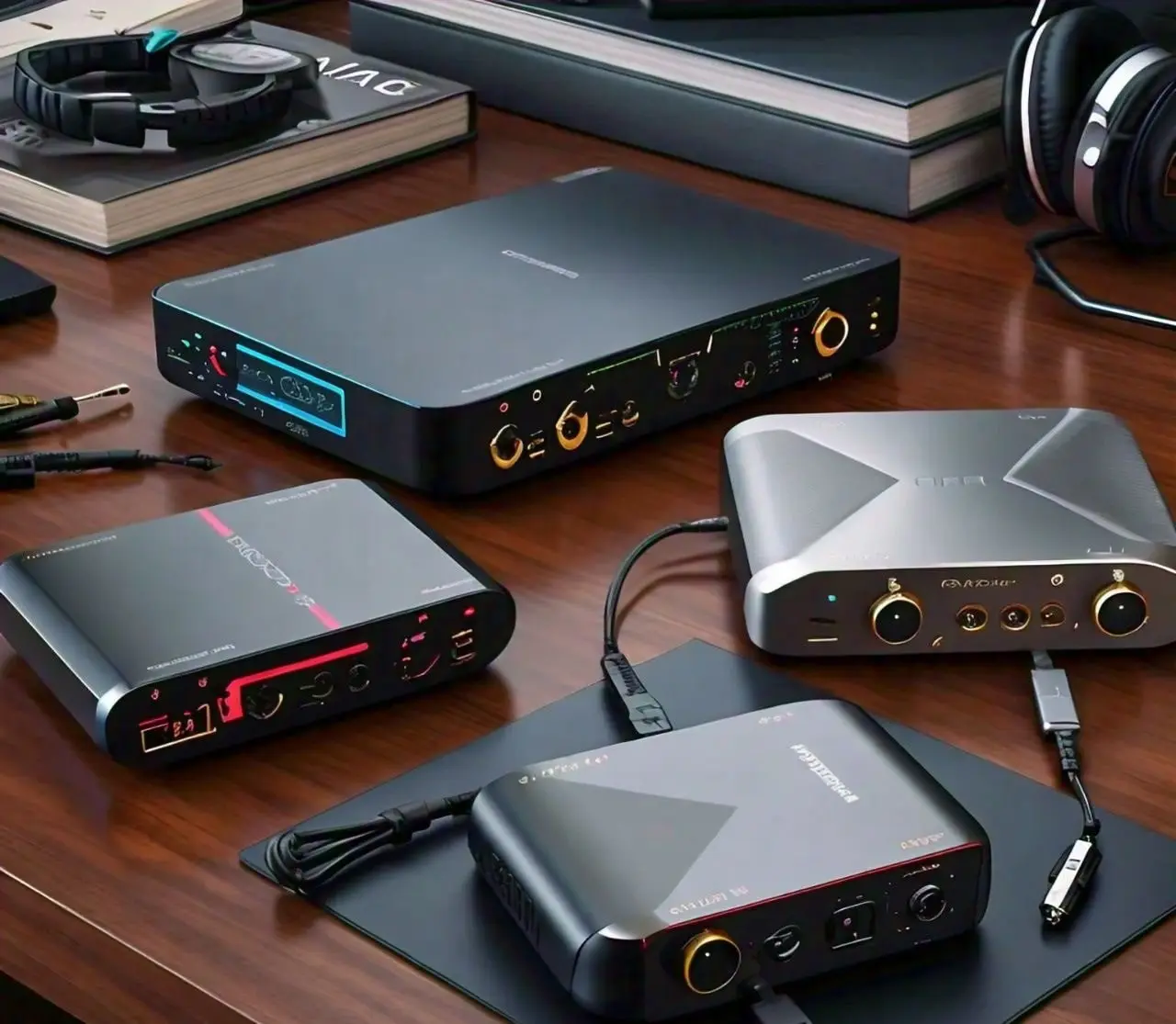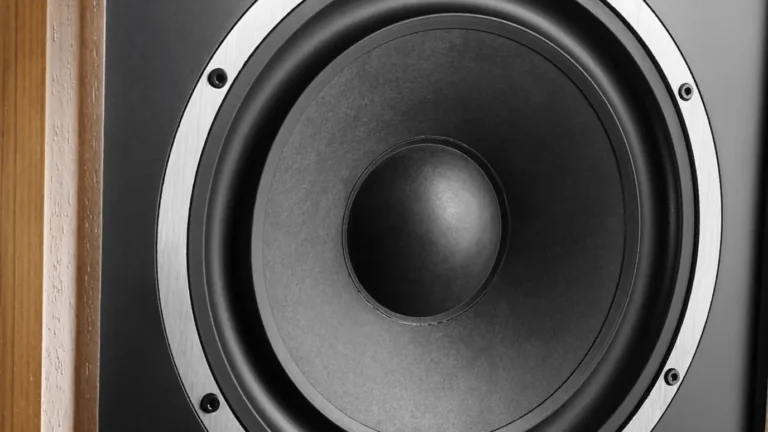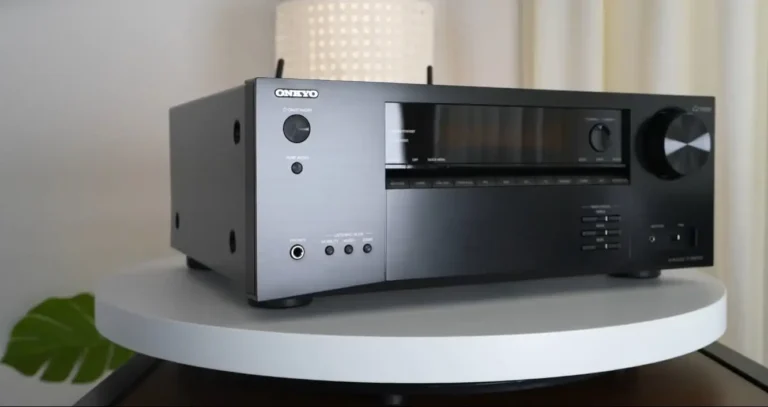What is non oversampling: How a Non oversampling DAC sound good?
Nowadays digital analog converter (DACs) plays a vital role in converting digital audio files into high-quality sound that we enjoy in our home setups. In DAC design oversampling is a technique to enhance the audio quality. However, non-oversampling DACs have emerged as an intriguing alternative that aims to deliver high-quality sound without oversampling.
In this article, we talk about the detailed working of non-oversampling DACs and explore how they achieve high-quality Audio.
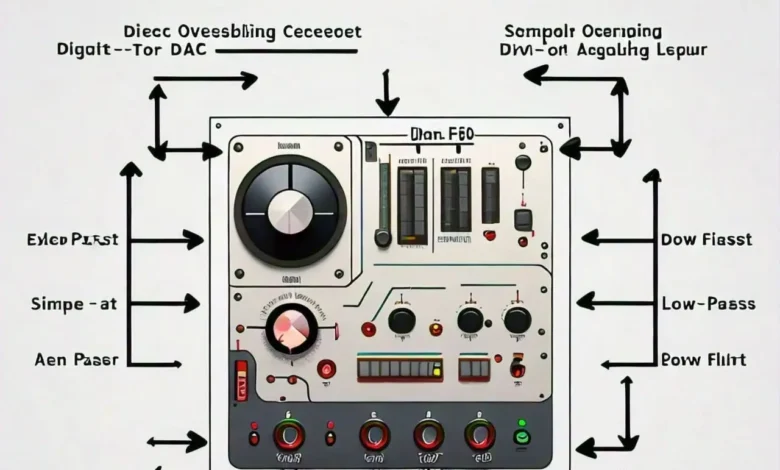
What is Non Oversampling
First of all, let us know what is non-oversampling. Non-oversampling (NOS) is a process of digital-to-analog conversion (DAC) technique that bypasses the oversampling process Mostly used in audio equipment, Like CD players and DACs.
Check Out: What is Oversampling
How Non-Oversampling (NOS) DACs Work
Non-oversampling (NOS) DACs take a straightforward approach to digital-to-analog conversion, maintaining the original sample rate and bit depth of the digital audio signal without any upsampling or interpolation. This section explains the process and principles behind NOS DACs, highlighting their distinct characteristics.
The Basics of Non-Oversampling
In digital-to-analog conversion, the digital audio signal is a series of values that presents the amplitude of the sound wave at specific intervals or samples. These samples are taken at a standard rate, such as 44.1 kHz for CD-quality audio. A NOS DAC converts these digital samples or digital signals directly into analog voltage levels without any further steps to increase the sample rate or modify the signal.
Step-by-Step Process of Non-Oversampling Conversion
Let me tell you the detailed process of Non- Oversampling Conversion:
- At First Receiving the Digital Audio Signal:
- The DACs receive the digital audio signal at its original sample rate as I mentioned above. For example, a 16-bit/44.1 kHz signal from your CD Player.
- NowDigital-to-Analog Conversion:
- Each digital sample that your DACs receive is converted directly into an analog voltage level. Your DAC generates a stepped waveform where each step corresponds to a digital sample value.
- Next the Reconstruction Filter Process:
- A simple analog low-pass filter or we can say that reconstruction filter is applied to clear out the stepped waveform, reducing high frequency and noise. This filter is less complex than the filters used in oversampling DACs because it operates at the original sample rate.
- Now the Output:
- The Final analog signal is then amplified and sent to the output terminal ready to be played through your beautiful speakers or headphones.
What are the Characteristics of NOS DACs
- Purify Signal :
- NOS DACs aim to preserve the original digital signal without any processing or alteration. This results in a more “pure” and clear sound that some audiophiles like us would prefer.
- Quality of Sound:
- Non-versampling DACs can produce a sound that is kept original and natural and less modified. Many of my friends describe the sound as being clearer and more realistic.
- Simple Design:
- The design of NOS DACs is simple, with a little bit of components, and easy to use as compared
to oversampling DACs.
- The design of NOS DACs is simple, with a little bit of components, and easy to use as compared
- Distinct Sound Signature:
- NOS DACs often have a unique sound signature as compared to oversampling DACs. This sound signature may roll off high frequencies and a different handling of transient responses, which
may some listeners find appealing.
- NOS DACs often have a unique sound signature as compared to oversampling DACs. This sound signature may roll off high frequencies and a different handling of transient responses, which
Examples of NOS DACs
- Audio Note DACs:
- Metrum Acoustics DACs:
What is Oversampling and Non Oversampling DACs
As we all know DACs convert digital audio signals into analog form. Furthermore let us know about Oversampling, In DACs Oversampling increases the sample rate beyond the native resolution of the audio signal, aiming to improve the accuracy and reduce the distortion in audio. However, oversampling introduces complexities in reconstruction filters and timing errors, potentially affecting sound quality.
On the other hand, the Non-oversampling DACs adhere to the original sample rate of the audio signal without the oversampling techniques. Instead, the non-oversampling will prioritize
simplicity and purity in the audio signal processing, aiming to preserve the integrity of the audio.
non-oversampling vs oversampling dac
The choice between NOS and oversampling DACs ultimately comes down to personal preference and system synergy. If you prefer a warmer, more analog sound with less emphasis on precision, a NOS DAC might be your best bet. But if you’re after cleaner, sharper detail and a more technically accurate sound, an oversampling DAC could be the better fit.
Both types have their merits, and neither is universally better than the other—it’s all about how you want your music to sound.
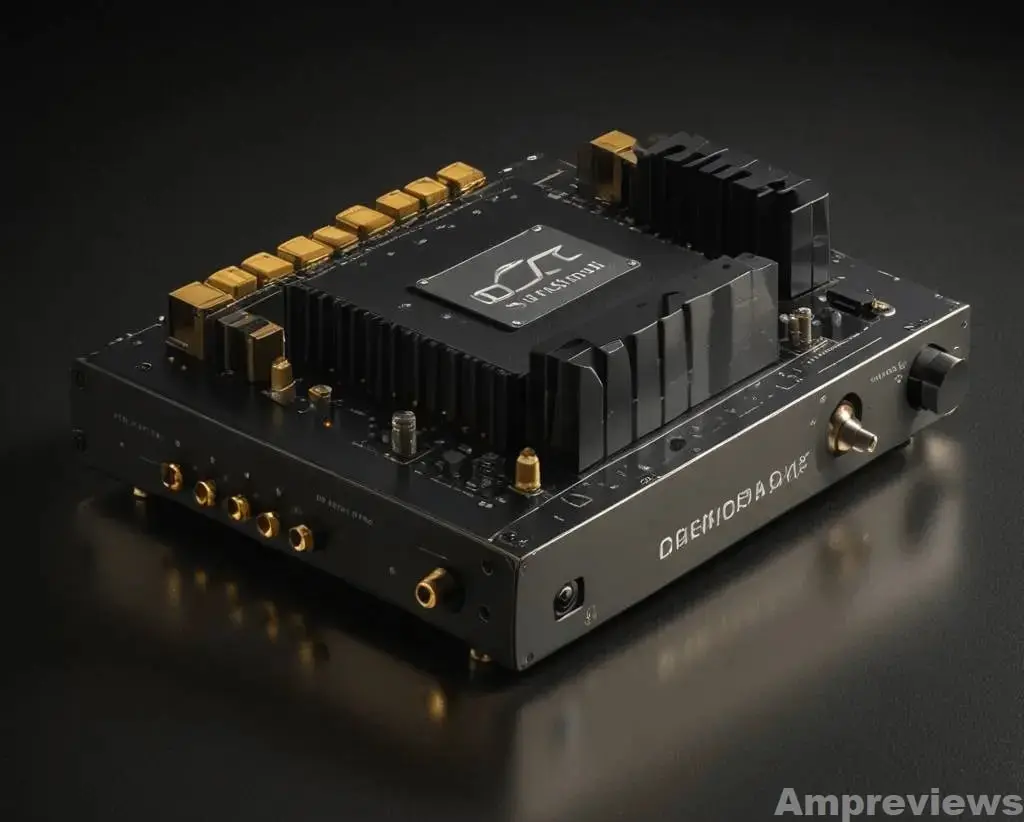
How Non-Oversampling DACs Retain Musical Integrity
One of the main reasons why Non Oversampling DACs sound so good is the ability to retain the musical integrity of the source material. By avoiding any change or modification of the digital audio signal inherent in oversampling techniques, Non oversampling DACs ensure that the dynamics and main characteristics of the music remain intact. This type of original recording allows listeners to experience the music as it was intended by the artist.
Transparency and Clarity of the Sound Non-Oversampling DACs
Another benefit of NOS DACs is their transparency and clarity in sound reproduction. By maintaining a simple signal path with fewer processing stages, Non Oversampling DACs minimize the digital distortion and time variation in sound, resulting in cleaner and more transparent audio signals.
This transparency of audio signals allows listeners to dive deeper into music, showing small differences and details that the digital processing of oversampling DACs might otherwise hide. The result is a more immersive and engaging listening experience that draws listeners into the heart of the music.
Warmth and Smoothness of Analog Sound
Perhaps one of the most important characteristics of Non-Oversampling DACs is their analog-like warmth and smoothness. Non-oversampling DAC lovers often love the smooth sound they produce, which reminds them of old-fashioned analog recordings.
This warm feeling adds a lot of emotion and musicality to the music, making listeners feel more connected to the performance and letting them experience all the feelings the music carries.
Personal Taste and Subjective Preference of the Listener
Ultimately, the appeal of Non-Oversampling DACs is subjective and highly dependent on the listener’s choice and listening habits. Some listeners, like me, may gravitate towards the natural sound of Non-Oversampling DACs, while other listeners may prefer the more analytical and precise presentation offered by oversampling DACs.
What matters most is finding a DAC that complies with your taste and your expensive complements your listening setup, allowing you to fully feel the music and enjoy the magic of high-fidelity audio reproduction.
Non Oversampling filter:
Regarding audio playback, the concept of Non Oversampling (NOS) is a bit different from the typical digital processing methods used in most modern DACs. Instead of artificially upscaling the original audio signal by adding extra samples (as oversampling does), an NOS filter simply leaves the digital data as is.
By bypassing the oversampling process, a NOS DAC delivers the audio in its rawest form, preserving the timing and phase integrity of the original recording. Some audiophiles swear by this approach, claiming it brings out a more natural, analog-like sound, closer to what the artist intended. It’s not about perfect measurements or filtering out all potential distortions; rather, it’s about maintaining the authenticity of the signal and allowing the music to breathe more organically.
That said, this approach can also leave certain high-frequency artifacts unaddressed, which oversampling filters would typically smooth over. Whether or not this trade-off is beneficial depends on personal taste, the type of music being listened to, and the rest of the audio system.
Compatibility with Vintage Gears:
Vintage audio enthusiasts will appreciate this compatibility. NOS DACs, by not disturbing the digital signal as much, can potentially create a more balanced sound that combines better with the analog characteristics of Vintage amplifiers and speakers. This can lead to a more awesome and enjoyable listening experience for those having their vintage setups.
Best Non Oversampling DAC
When it comes to Non-Oversampling (NOS) DACs, the appeal lies in their ability to provide an unaltered, raw version of the music, without adding any digital processing or upscaling. For many purists, the simpler approach leads to a more authentic and engaging sound. Here are a few of the top NOS DACs that are worth considering:
- Audio Note DAC 2.1x Signature
Audio Note is renowned for its minimalist approach, and the DAC 2.1x Signature is a perfect example of a NOS DAC done right. It features no upsampling or digital filtering, resulting in a beautifully organic and warm sound. It’s a great option for those who prefer a slightly laid-back presentation, perfect for jazz, classical, or vocals. - Metrum Acoustics Pavane
Metrum has been a long-time favorite among NOS enthusiasts, and the Pavane stands as one of their best offerings. It uses custom R2R ladder DAC modules to deliver an incredibly detailed and dynamic sound. If you’re looking for something with a bit more punch and excitement while still preserving the NOS purity, the Pavane is a great choice. - MHDT Labs Orchid
The MHDT Orchid is another standout in the NOS DAC world. Known for its relaxed, natural sound, it pairs perfectly with tube amps and warm speakers. It’s a great option for listeners who enjoy a more relaxed and analog-like presentation without sacrificing detail. - BorderPatrol DAC SE
This DAC has been gaining a lot of attention for its unique sound signature. Using NOS technology, the BorderPatrol DAC SE delivers a smooth, natural, and highly musical presentation. What sets it apart is its integration of tube rectification in the power supply, giving the sound an extra layer of warmth and depth. - Denafrips Ares II
A more budget-friendly option, the Denafrips Ares II is an R2R DAC that operates in NOS mode, making it a solid choice for those looking to experience the NOS sound without breaking the bank. Despite its lower price point, the Ares II punches well above its weight in terms of detail, dynamics, and imaging.
tda 1541 non oversampling
The TDA1541 DAC chip holds a special place in the world of audiophiles, particularly when it’s used in non-oversampling (NOS) mode. Introduced by Philips in the late 1980s, the TDA1541 became famous for its rich, natural sound, and it’s still highly regarded by those who appreciate a more analog-like audio experience.
When the TDA1541 is implemented in NOS mode, the digital signal is left untouched, without any oversampling or upscaling. This means the original audio data is converted directly to analog, with no additional filtering or processing. Many people believe this creates a more pure, organic sound, bringing out the texture and nuance in the music that might otherwise be lost with digital manipulation.
The TDA1541 has a warmth and musicality that’s often compared to vinyl records. It may not be the most technically precise or “clean” in terms of measurements, but it shines when it comes to emotional engagement and musical flow. This is why NOS implementations of the TDA1541 are still sought after today by audiophiles who prioritize musical enjoyment over sterile perfection.
Though it’s an older chip, the TDA1541 has stood the test of time, and in NOS mode, it continues to offer a sound that many describe as natural, effortless, and truly captivating.
What About the Future of Digital Audio and Non-Oversampling Technology?
As the digital audio landscape continues to evolve, new technologies are constantly influencing how we listen to music. Looking ahead, it’s worth considering the unique role of non-oversampling (NOS) technology in this dynamic environment and what it could mean for future listening experiences.
Trends in Digital Music and Impact on NOS DACs
High-Resolution Audio
With the rising popularity of high-resolution audio streaming, listeners are increasingly seeking DACs that truly capture the depth and detail of these formats. NOS DACs, known for their ability to handle high sample rates, are starting to garner more attention as a viable choice in this high-res audio era.
MQA and Other Lossless Codecs
Formats like Master Quality Authenticated (MQA) and other lossless codecs have gained traction due to their blend of exceptional audio quality and efficient bandwidth usage. While oversampling DACs have traditionally been preferred for these types of codecs, NOS DACs present an intriguing alternative for those drawn to a unique sound character. Many audiophiles who favor NOS DACs appreciate the “analog-like” warmth they bring, which stands out in today’s digital-dominated world.
Do NOS Converters Still Have a Role in Today’s Hi-Fi?
Personal Listening Preferences
At the end of the day, your preference for oversampling or non-oversampling DACs depends on your listening tastes. Some listeners feel that NOS DACs offer a more authentic and musical experience, providing a sound that feels natural and emotionally engaging. For those who prioritize a certain tonal character over analytical precision, NOS DACs are a perfect match.
Renewed Enthusiasm in the Audiophile Community
In the audiophile community, there’s a growing fascination with vintage gear and a return to analog-inspired sound. This trend has revived interest in NOS DACs, which appeal to enthusiasts who value their distinct, classic sound. These converters evoke a sense of nostalgia while delivering a truly unique experience for listeners craving something different from modern digital setups.
While oversampling remains the dominant approach in DAC technology, NOS DACs hold their own, especially for listeners searching for a unique auditory experience. As audio technology advances and preferences shift, NOS DACs will likely continue to be a cherished option for those who value their distinct, characterful sound.
By exploring the possibilities NOS technology offers, audiophiles can find new ways to connect with their music and enhance their listening experience. Whether you lean toward oversampling or NOS DACs, the most important factor is finding the setup that resonates with you and brings your music to life.
My Verdict
Audio is a deeply personal and subjective realm. Choosing between non-oversampling and oversampling DACs ultimately comes down to your individual preferences and the qualities you value in sound reproduction.
If you’re considering NOS DACs, approach it with open ears and curiosity. Try out different models, play various audio formats, and see how they fit with your current system. Remember, what sounds amazing to one person might not hit the same way for another.
For further exploration, here are a few great resources:
- Audiophile Forums
Online communities like Head-Fi, AudioCircle, and Computer Audiophile are fantastic resources for learning about NOS DACs. Dive into discussions, ask questions, and tap into the experiences of others who share your interest. - Expert Reviews
Reputable sources like Stereophile, The Absolute Sound, and Hi-Fi News publish in-depth reviews of NOS DAC models. These reviews offer valuable analysis and comparisons, helping you make more informed choices.
Remember, audio equipment is just one piece of the puzzle. Room acoustics, speaker positioning, amp pairing, and your listening habits all play significant roles in shaping your listening experience. Take a comprehensive view when evaluating your setup.
In conclusion, NOS DACs offer a distinctive sound signature that resonates with many audio enthusiasts. By grasping the basics of NOS technology, experimenting with filters, exploring file formats, and thoughtfully curating your system, you can create a setup that matches your taste.
So, embrace the world of NOS DACs, listen with intent, and enjoy your journey into a richer, more immersive audio experience. Trust your ears, find your rhythm, and let the music take center stage.
To Summarize or Conclude:
Finally, In the world of Audiophiles, Non oversampling DACs are popular for their simplicity and a focus on keeping the sound true to the original recording can be truly artistic, Oversampling DACs offer a captivating listening experience and touch the soul of the listener.
Some frequently asked questions By our visitors:
What is the meaning of oversampling?
Oversampling is the process of sampling a signal at a rate significantly higher than the Nyquist rate to improve signal resolution and reduce noise.
What is the opposite of oversampling?
Undersampling, which involves sampling below the Nyquist rate or reducing the number of samples in a dataset.
What is oversampling vs downsampling?
Oversampling increases the number of samples, especially in underrepresented data classes, while downsampling reduces samples, typically in overrepresented classes.
Why is oversampling important?
It enhances signal quality, reduces noise, and in data science, helps address class imbalances.
Why is R2R DAC better?
R2R DACs are valued for their accuracy and natural sound, often preferred by audiophiles for their analog-like performance.
Is oversampling a problem?
Excessive oversampling can increase processing load and may introduce artifacts if not implemented correctly.
What is the oversampling principle?
Oversampling involves sampling at higher rates to allow for improved signal processing, noise reduction, and easier filtering.
What does downsampling do?
Downsampling reduces the number of data points, lowering file size and computational load but potentially affecting quality.
Do I need oversampling?
Oversampling is useful if you need improved resolution, noise reduction, or to balance imbalanced datasets.
What is 4K oversampling?
4K oversampling is capturing video at a resolution higher than needed, then downscaling to improve image clarity and reduce noise.
What is the weakness of oversampling?
It can increase processing requirements and, if overused, lead to signal artifacts or redundant data.
What is oversampling?
Oversampling is used in signal processing, digital audio, imaging, and data science to improve quality or balance datasets.
Why do we need upsampling?
Upsampling is used to increase sample rates or balance datasets, enhancing model performance in machine learning and detail in audio processing.
Does downsampling reduce quality?
Yes, downsampling can reduce quality as it removes data points, potentially losing detail or accuracy.
Is upsampling good or bad?
Upsampling can be beneficial for balancing data or improving detail, but if excessive, it may add unnecessary computational load or noise.
Why is downsampling needed?
It reduces data size, processing load, and storage requirements, especially for handling large datasets efficiently.
What is the use of upsampling?
Upsampling is used to increase resolution, balance datasets, and enhance detail in applications like machine learning, audio, and video.

